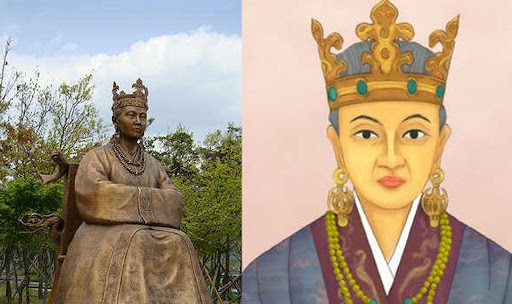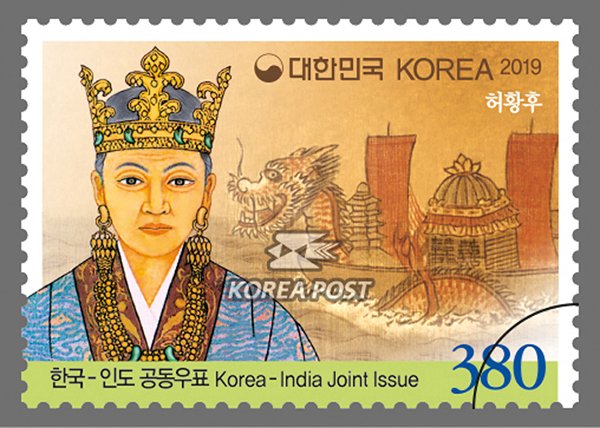
In 48 BC, the princess, then 16, travelled to Korea from the ancient land of ‘Ayuta’ and married Kim Suro, founder and King of Geumgwan Gaya in south-eastern Korea.
By Suanshu Khurana
On the banks of the Sarayu in Ayodhya, acres of green space, mostly known as Ram Katha Park, have been through a major beautification exercise. Once inaugurated on November 4, the spruced-up space will be known as Queen Heo Hwang-ok Memorial Park, after a Korean queen believed to have had Indian roots.
Earlier this month, the Delhi-based Korean Centre for Culture, in collaboration with the Indian Council for Cultural Relations, showcased a musical depicting the story of the queen at Kamani Auditorium. Directed by actor and director Imran Khan, The Legend of Princess Sriratna commemorated the completion of the park in Ayodhya.
Who was Queen Heo Hwang-ok?
She was a Korean queen who is believed to have been born Princess Suriratna of Ayodhya, daughter of King Padmasen and Indumati. Padmasen ruled the ancient kingdom of Kausala, a region that extended from present-day UP to Odisha.
Her story is described in Samguk Yusa (Memorabilia of Three Kingdoms), a 13th-century collection of legends, folktales and history of Korea’s three kingdoms — Goguryeo, Baekje and Silla — and some other regions.
In 48 BC, the princess, then 16, travelled to Korea from the ancient land of ‘Ayuta’ and married Kim Suro, founder and King of Geumgwan Gaya in south-eastern Korea. She travelled by boat along with an entourage having been sent by her father, who is said to have had a dream about her marrying Suro. She became the first queen of Geumgwan Gaya, believed to be located around modern-day Gimhae city in Southern Gyeonsang province. The couple are said to have had 12 children.
What is her legacy?
More than six million present-day Koreans trace their lineage to Heo Hwang-ok. They belong to clans such as Gimhae Kim, Heo (the queen had asked the king that two of their sons be given her maiden name) and Lee. Her direct descendants include Kim Yoon-ok, wife of former South Korean President Lee Myung-bak. King Kim Suro and Queen Heo Hwang-ok birthed the Karak dynasty, whose descendants include former South Korean President Kim Dae-jung and former Prime Minister Kim Jong-pil.

For years now, many Koreans have visited Ayodhya to pay homage to the queen’s ancestral home. In Gimhae in South Korea, two tombs, believed to be of Kim Suro and queen Heo Hwang-ok, are maintained as a memorial park. A pagoda, believed to have been brought by the queen from India to calm the ocean gods, is placed next to the tomb. Culturally, the queen has been part of Korea’s popular culture for years, with many plays and musicals based on her.
What led to setting up the memorial park in Ayodhya?
In 2000, India and South Korea signed an agreement to develop Ayodhya and Gimhae as sister cities. The memorial space was unveiled in 2001. In 2016, a proposal was sent by a South Korean delegation to refurbish the existing memorial. Subsequently, Prime Minister Narendra Modi and South Korean President Moon Jae-in signed an MoU for developing the memorial. South Korean First Lady Kim Jung-sook attended the inauguration of the beautification work in 2018.
The memorial now comprises Queen and King pavilions with their busts in place, and a pond to represent Princess Suriratna’s journey. According to the legend, the princess had taken a golden egg to Korea, and the park includes an egg made of granite.
How much of her Indian connection is established as fact?
The story has helped boost the relationship between India and South Korea. But there is some debate about her Indian origins. There are many versions of the same story. While Samguk Yusa talks about the queen from a distant land named Ayuta and popular culture considers it Ayodhya, no Indian document or scripture has any record of her. Some historians also believe that the princess could actually be from Thailand ’s Ayutthaya kingdom. But the kingdom in Thailand came about in 1350, years after Samguk Yusa had already been written.
Also read: The Indian Princess who became the Korean Queen
________________________